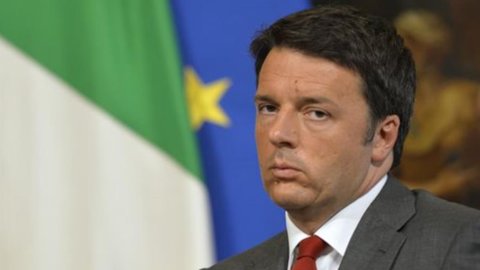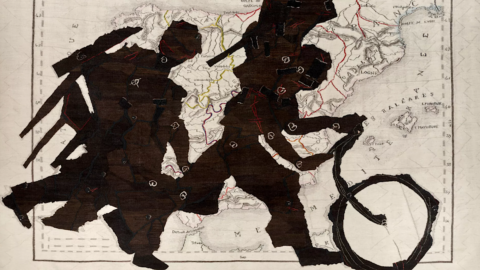The exhibition Pine's Eye from February 29 to May 9 at Talbot Rice Gallery, University of Edinburgh (Scotland) explore what it means to be human in times of ecological change. Named after "Pinocchio" it is necessarily complicated and mischievous in that weaves a journey between subjectivities trapped in the natural world. Rejecting progress, purity, standardization and originality it: creates new forms of ritual, redefines modernism as a pagan quest, asks flowers to witness global treaties, observes the hybrid human and botanical cultures of the enchanted islands, introduces phenomena unexplained in depictions of early modern history, he weeds European cities as a form of resistance, imagines alternatives to colonialism, and introduces indigenous stories of the forest.
Through masks, mannequins and magic, Pine's Eye offers alternative perspectives on how to understand ourselves in the face of the environmental crisis. Including contemporary artists from both indigenous groups and the international art world it features: Firelei Báez, Beau Dick, Laurent Grasso, Alan Hunt, Torsten Lauschmann, Ana Mendieta, Kevin Mooney, Beatriz Santiago Muñoz, Taryn Simon, Johanna Unzueta, Lois Weinberger, Haegue Yang.
Dominican artist Firelei Báez creates works that critically engage with Black female subjectivity, remaking art historical narratives while reinforcing regional mythologies.
In “I also write love poems (The right to non-imperative clarity)” Báez extracts pages from historical books that have been deemed irrelevant or inappropriate, to highlight and represent what or who is missing from the pages, whose stories are not told.
Beau Dick (1955-2017) was a Kwakwaka'wakw chief of Northwest America who made engravings on the stories important to the cosmology of this culture. Crown Chief Alan Hunt and the Kwakwaka'wakw community will unveil 15 new masks to be worn at an exhibition ceremony in Edinburgh, the first of its kind outside Canada.
Speck and Hunt masks represent the story of Atlakim, the story of a boy who gets lost in the woods to be visited by many spirit guides who teach him the virtues.
French artist Laurent Grasso deals with the relationship between art and science. “Studies into the Past” establishes a false historical memory by inserting a mysterious phenomenon into Renaissance-style imagery, upsetting our sense of this Eurocentric history and asking us to find a sense of wonder and strangeness in this hybrid, protomodern period of knowledge acquisition.
Torsten Lauschmann uses different types and eras of technology to create mechanical and digital hybrids, automatons and sound machines.
Ana Mendieta (1948-1985), the legendary Cuban American artist, devoted much of her career to the exploration of the "earth body". Delving into Mexican folklore, she used her own body as the site for staged ritual events that would unite her with the natural world. Her designs are derived from performances and capture a sense of a timeless mother figure; seeds, kernels and eyes of humanity. Kevin Mooney is based in Cork and his intuitive paintings reinterpret Ireland's colonial history and its stifled cultural heritage. Using layered imagery that incorporates straw, veiled figures, and enigmatic shapes, Mooney imagines how diverse this story may have been through its collision with indigenous African and Caribbean cultures.
Beatriz Santiago Muñoz makes documentary films often focusing on the ecology of her native Puerto Rico. The selection of films in Pine's Eye explores how the hallucinogenic and toxic plants of this region have both expanded the mind and led to human tragedies, their role in magic, and the changing everyday nature of the island due to tourism and adaptation .
American artist Taryn Simon spent three years working with a botanist to understand the composition of floral arrangements that appear in photographs showing the signing of treaties, trade agreements and diplomatic deals. The large bouquets reconstructed in “Paperwork and the Will of Capital” bear witness to changing global politics, while evoking Dutch still lifes and the impossible bouquet, in which flowers that do not bloom naturally at the same time of year have been painted in a single image.
Johanna Unzueta is a Chilean artist who has devoted much of her practice to understanding the tactility of industrial work. Her drawings – which can take the form of large site-specific murals – evoke life cycles, play, plant life, weaving and intuition.
Lois Weinberger lives and works in Austria. Seeing the garden as the antithesis of nature - ordered, designed, built on a human scale - Weinberger instead pursues an interest in ruderals - the "weeds" that fight against the logic of the city - and his practice revolves around the 'invite mushrooms into controlled spaces, designating 'empty' plots of land that develop their own ecologies and showcasing the organic detritus of plants and animals growing in the recesses of our built environments. Haegue Yang presents a set of sculptures from The Intermediates series atop a nonagonal shaped floor graphic with a new sound element synthesizing one's voice, fusing ideas of modernity, estrangement, pagan traditions and popular cultures to disrupt family hierarchies.
Cover image from source (Talbot Rice Gallery, University of Edinburgh, Scotland: Haegue Yang “The Intermediate – Long Neck Woman Upside Down”, 2016. Artificial straw, powder-coated steel stand, wheels, plastic fans, rattles, plants artificial, Saekdong fabric, Indian bells.Courtesy of Galerie Chantal Crousel, Paris





